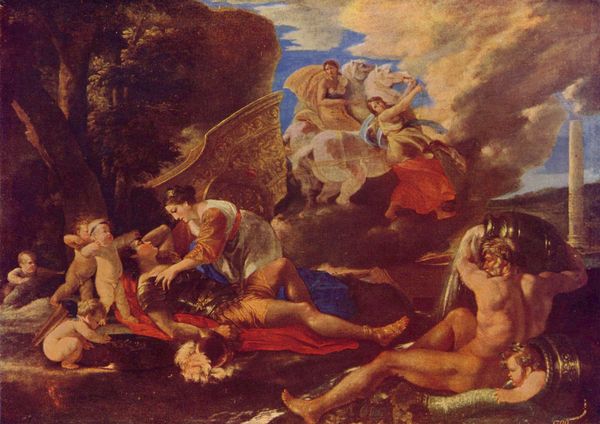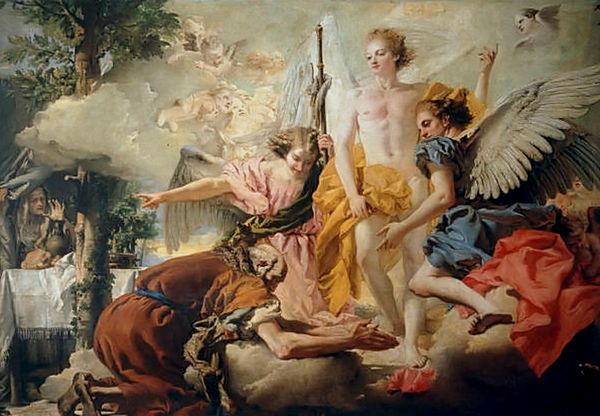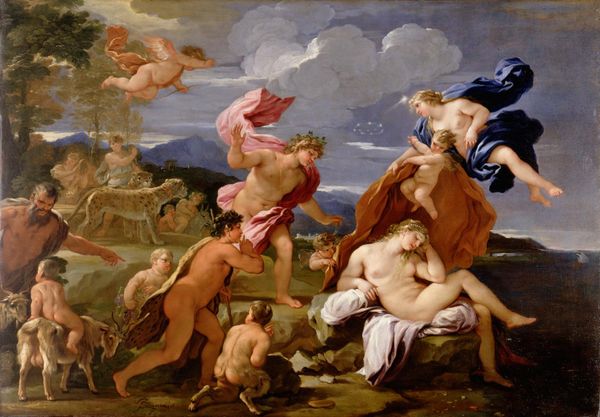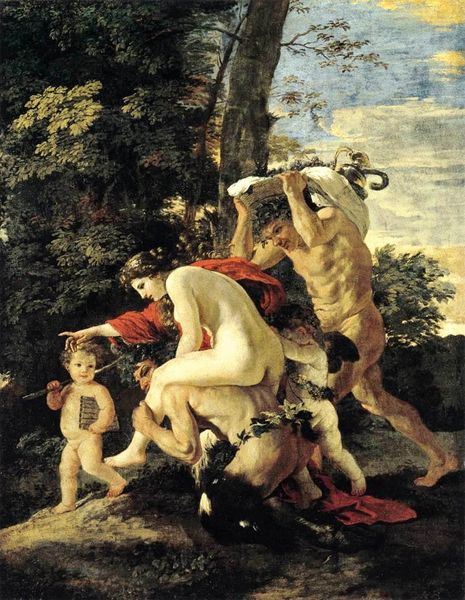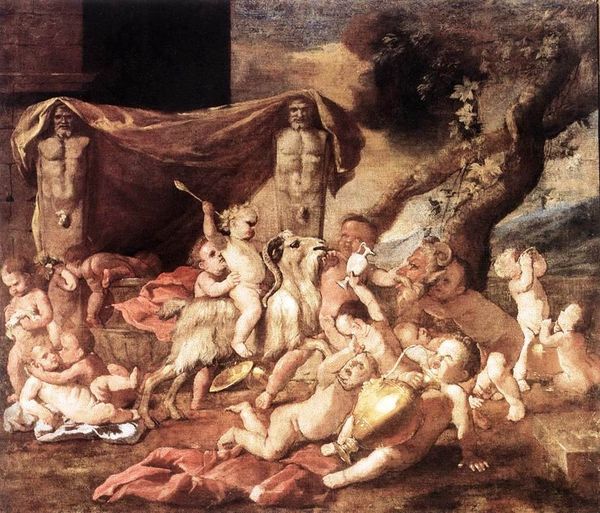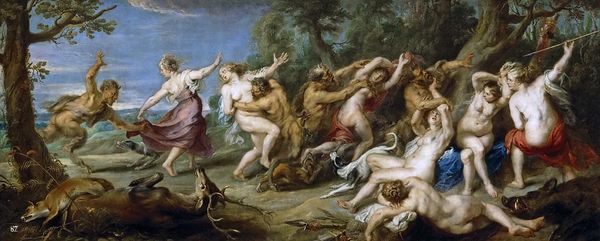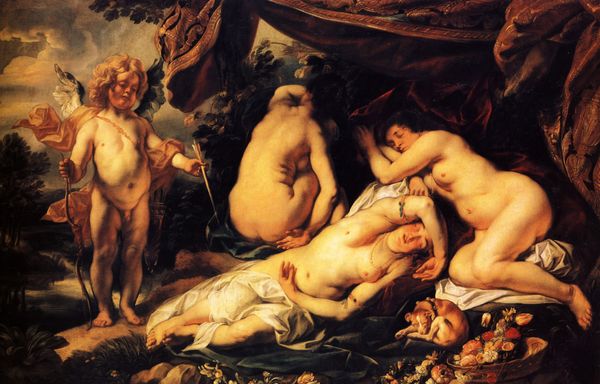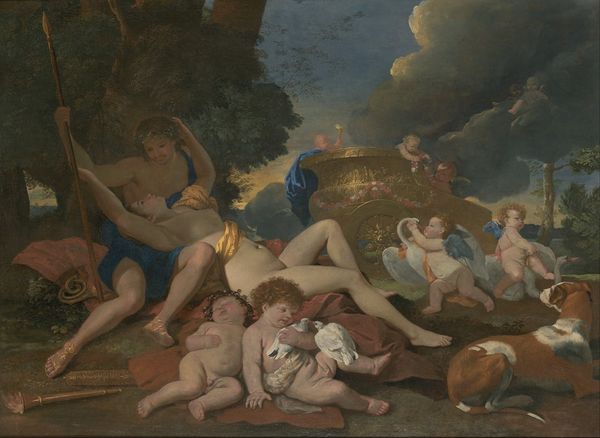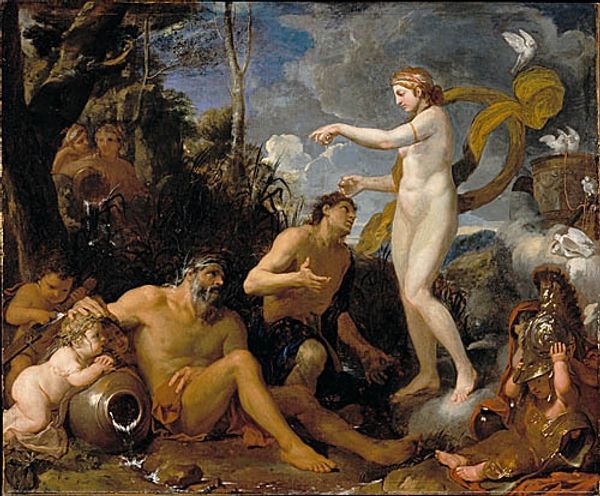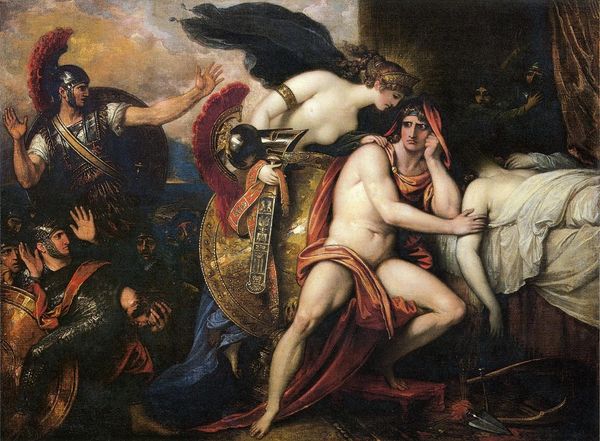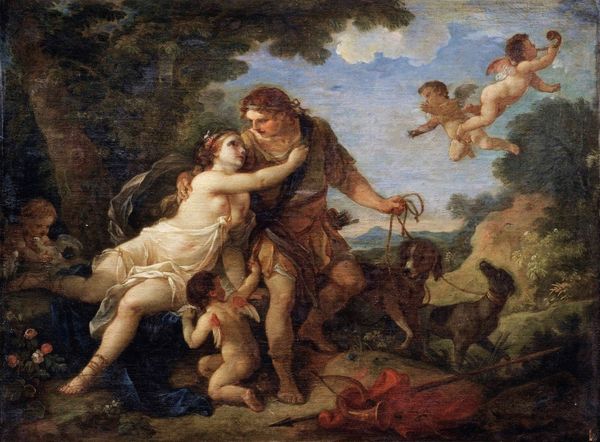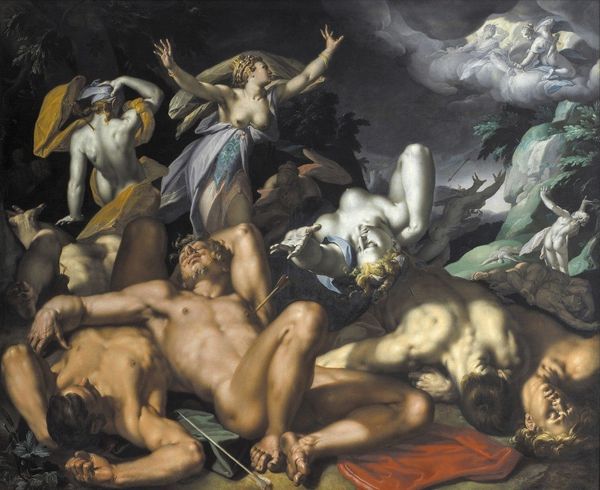
painting, oil-paint
#
baroque
#
painting
#
oil-paint
#
landscape
#
figuration
#
roman-mythology
#
mythology
#
history-painting
Dimensions: 99 x 134.6 cm
Copyright: Public domain
Editor: This painting, titled "Venus and Adonis," was created in 1624 by Nicolas Poussin, using oil paint. It immediately strikes me as a rather elaborate composition. How do you interpret this work in terms of its formal elements? Curator: Note how Poussin orchestrates this mythological scene, focusing on the interplay of lines and volumes. Consider the disposition of the figures in relation to the landscape, noting the diagonal thrust from lower right to upper left mirrored by the reclining nude of Venus. What is achieved by these structuring devices? Editor: It feels almost staged, like a classical tableau vivant. The figures are carefully arranged, and their gestures seem somewhat artificial. What’s the purpose of that careful composition? Curator: Precisely. This artifice is deliberate, an appeal to ideal form. Note the controlled palette, primarily warm hues with cool accents, creating a sense of balance. How does Poussin employ light to define the forms? Editor: The lighting seems to highlight certain areas and create strong contrasts between light and shadow. It emphasizes the contours of the bodies, making them stand out against the background. It's like he wants you to look there. Curator: Indeed. The composition itself reinforces the underlying themes of love, beauty, and, ultimately, tragedy. Are these opposing ideas harmonious or discordant here? Editor: Perhaps the harmony is the deceptive element, because these figures and dramatic colours distract me from the very sombre story it presents. Curator: A fine observation. I appreciate your perception of Poussin's compositional logic to emphasize tragic outcomes by opposing harmony and discord in the space. Editor: It's fascinating how much the structure contributes to the experience, even if I am not that familiar with the underlying story. Curator: A focused look allows us a different kind of historical analysis. Now I'm off to find out more!
Comments
No comments
Be the first to comment and join the conversation on the ultimate creative platform.
